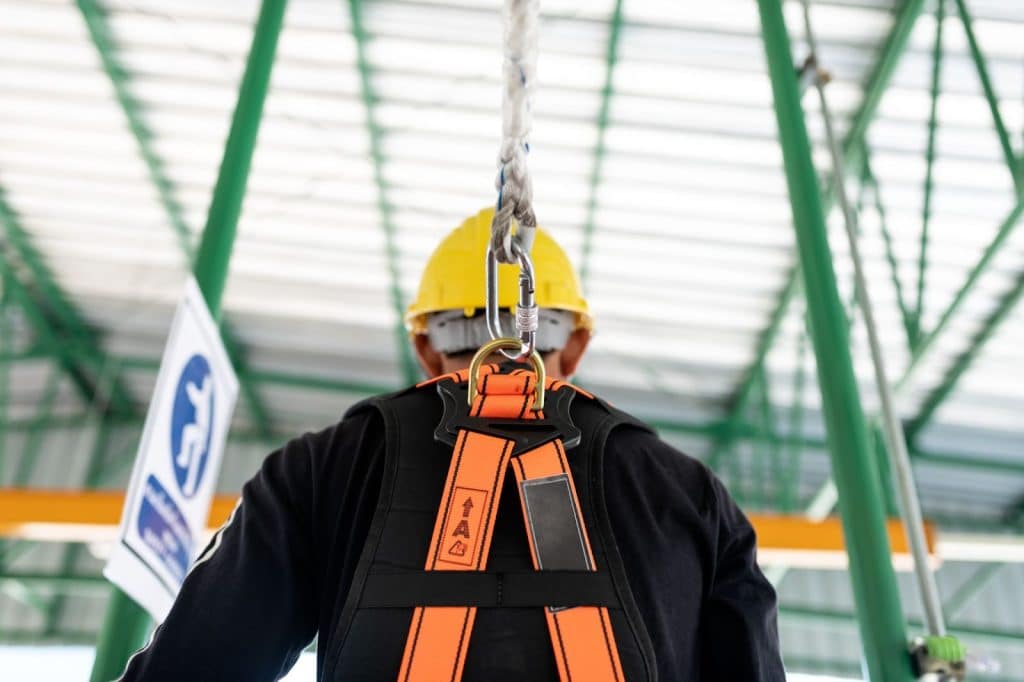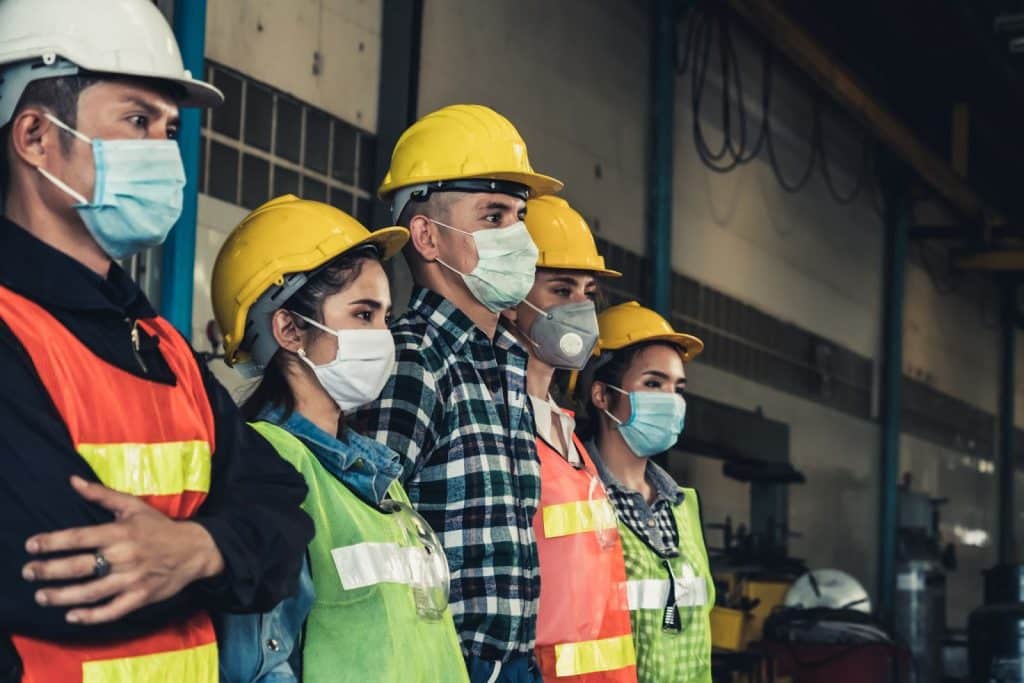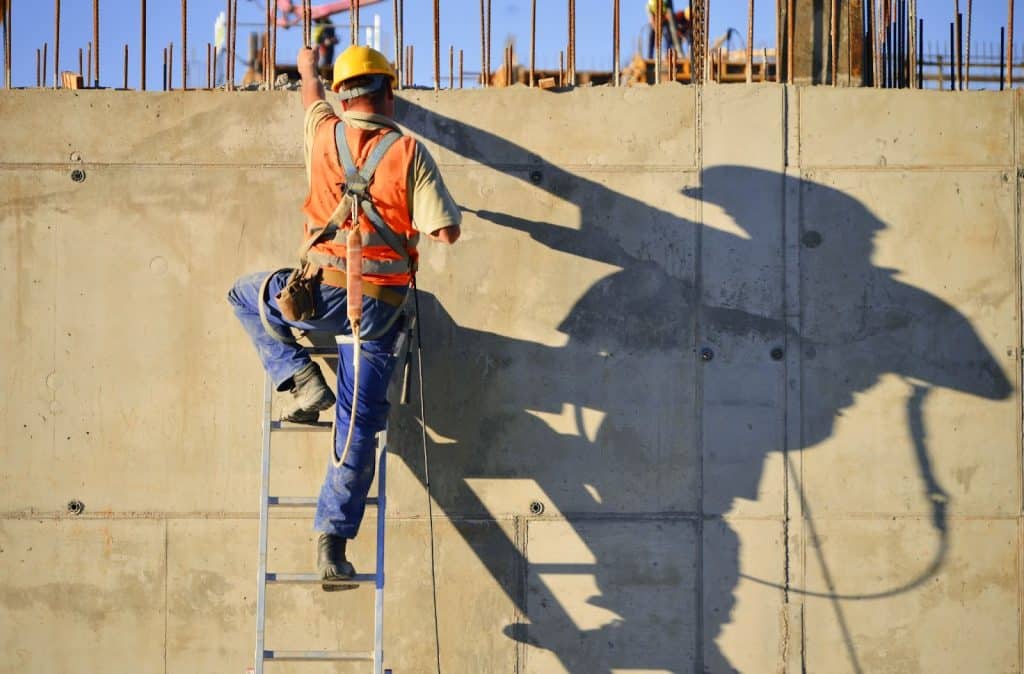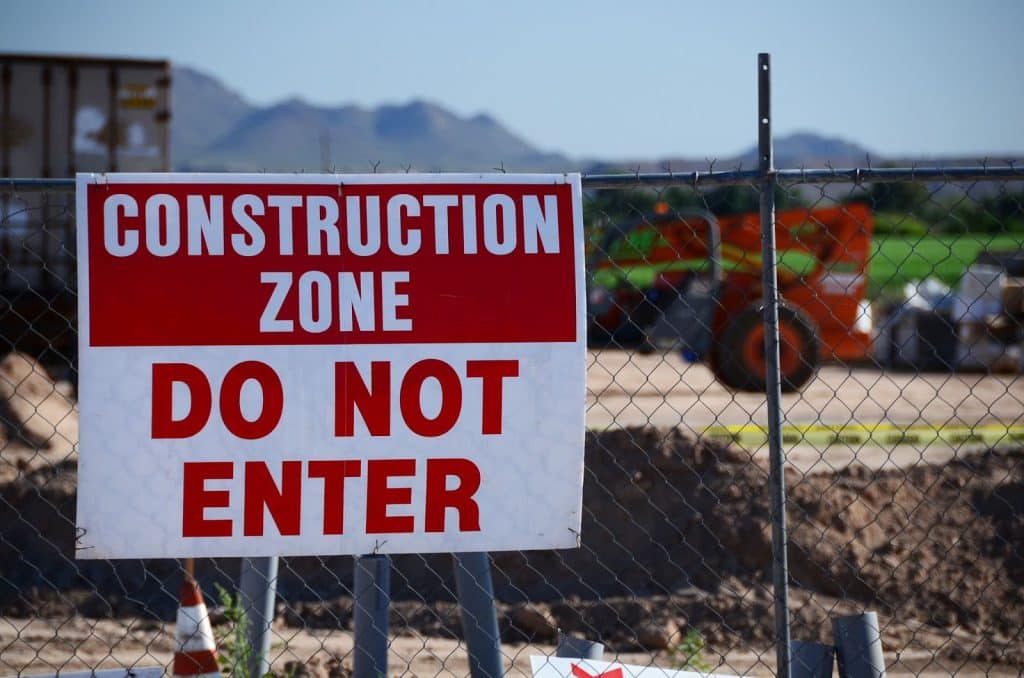Anyone in the business knows that construction is dangerous. Remote work sites (where a site supervisor may be overwhelmed with responsibilities) are a major source of accidents. If you don’t believe me, then take a look at the statistics in the United States, right from the OSHA.
In 2020, the construction industry made the top ten list for the most frequently cited standards not once but three times.
In fact, the industry managed to get those three times all in the top five, truth be told. Here are the top five most frequently cited standards by Federal OSHA in the fiscal year of 2020:
| Position in OSHA Top 10 List | Topic of Citation | Industry Information | OSHA Standard Cited |
| 1 | Fall Protection | Construction industry | 29 CFR 1926.501 |
| 2 | Hazard Communication | General industry | 29 CFR 1910.1200 |
| 3 | Respiratory Protection | General industry | 29 CFR 1910.134 |
| 4 | Scaffolding | Construction industry | 29 CFR 1926.451 |
| 5 | Ladders | Construction industry | 29 CFR 1926.1053 |
Source: OSHA
Given the above table that shows the construction industry has a few weaknesses, it’s wise to focus our safety topics towards correcting these common issues.
Similarly, when we compare statistics for work injuries, we see that the construction industry again aims to take its place amongst the top 3. According to the Bureau of Labor Statistics, the construction industry came in second in 2020 for workplace fatalities. There were a total of 1,008 deaths in the industry in 2020 alone.
By The Numbers
Again, the statistics don’t lie and tell us we have a thing or two to learn about safety. So, without further delay, let’s jump into the 12 safety topics for the construction industry that you must ensure are a part of your toolbox talks and safety program.
- Fall Protection
- Personal Protective Equipment (PPE)
- Scaffolding
- Ladders
- Working At Heights
- Hazard Communications
- Powered Equipment
- Lockout And Tagout
- Eye, Face, And Lung Protection
- Working In Harsh Environments
- Powered Vehicles
- Using Safety Apps Properly
Let’s jump into each with a brief overview so you can easily set up some custom toolbox talks or other training sessions with your team. We recommend using each of these topics as a baseline for a safety team meeting with your team. We’ve provided a list of 12 subjects, one for each month of the year.
Similarly, you’ll find some handy statistics and facts along the way to help you with your training. After all, evidence is often something that people have a hard time refuting, so a bit of fuel behind your safety message isn’t a bad idea.
Fall Protection

Falls are, in some industries, the leading cause of death. In fact, falls are often the primary cause of death in the construction industry. According to the Center For Construction Research And Training, falls accounted for 36.4% of deaths in the industry in 2019.
Facts like the statistic mentioned above are one of the reasons why pursuing a robust training program on the topic of fall protection is critical to your team member’s safety.
If you require a daily fall protection equipment inspection form, look at our template library of downloadable templates here.
Personal Protective Equipment (PPE)

Personal protective equipment is any equipment that a team member might wear to impede, prevent or stop injury from occurring due to hazards. PPE can include some of the following:
- Gloves
- Steel-toed boots
- Earplugs or muffs
- Fall restraint harnesses and lanyards
- Hard hats and bump caps
- Safety glasses and face shields
- Face masks and respirators
- Gas sensors
- Aprons and coveralls
Of course, there are numerous other types of PPE available, depending on the particular task. The OSHA has several standards particular to the construction industry to regulate PPE use. These specific regulations can be found in Construction Industry OSHA Standards (29 CFR 1926).
Setting up a training session with your team about PPE use is vital to managing risk within a construction site environment, and you should not overlook it.
Scaffolding

Scaffolding is dangerous if not correctly installed, or even when rain or other phenomenon are at play. However, following the best practices outlined by the OSHA standards for scaffolds will keep most related hazards at bay. But a complete and concise training session for your team is vital to minimize the fall risks associated with scaffolding.
Scaffolding is, as you know, a part of many construction sites. If you have any scaffolding projects in your team’s future, including a scaffold safety and awareness training session for your team is a great idea.
Did you know that scissor lifts are considered mobile scaffolding by the OSHA? It’s true! If you want to know more about scissor lift certification and inspection, read our article here on the subject.
Ladders

Ladder safety training is something that many will laugh and snicker at, unfortunately. Perhaps it is a contributing factor in why falls are the leading cause of death within the construction industry. It’s something that most of us would take for granted – climbing a ladder. However, there is no mercy to the landing with falls, so due diligence is required.
When running your training/safety meeting about ladders, remember to share the method provided by the American Ladder Institute: The Three-Point Of Contact Climb.
This climbing method is simple: both feet and one hand are on or holding the ladder, or both hands and one foot. This 3-point rule allows workers to maintain balance and control when taking a ladder climb or descent. Encouraging workers to utilize this movement technique will aid in decreasing ladder fall hazard potential.
Working At Heights

At this point, you should see the trend here. In the construction industry, the leading cause of death are falls to a lower level. As mentioned, we want to focus on the weaknesses of the industry that cause injury or death. Therefore we recommend wrapping up the ladders, fall restraint PPE, scaffolding, and fall protection training sessions together in the working at height training.
It isn’t just construction workers in the United States that are getting injured or worse from falls resulting from working at heights accidents. For example, according to OHS Canada, more than 40,000 workers are injured annually due to fall incidents. For a country of only 30 million or so, that’s a pretty big figure showing that the issue is a worldwide phenomenon that needs addressing to all team members in all countries.
Hazard Communications

Hazard communication is one of the essential safety topics for construction workers. It encompasses a wide range of potential hazards that workers might encounter on the job site. From chemical hazards to noise hazards, hazard communication helps workers understand the risks they face and protect themselves from harm.
The OSHA states very clearly that “The standard that gave workers the right to know, now gives them the right to understand.” The standards for hazard communication held by the OSHA align with those outlined in the Globally Harmonized System of Classification and Labelling of Chemicals (GHS).
That means that you must maintain proper records and information about anything remotely dangerous within your construction site. It may include anything from spray paint to propane cylinders.
It also means that appropriate hazard warning signage is a must. Training staff on the various hazard communication processes, signs, and GHS information is critical to a robust safety process on the construction site. Ergo, don’t neglect the inclusion of signage and communications within your safety topics for construction toolbox talks.
Powered Equipment

Powered equipment is an essential part of many construction tasks, but it can also be dangerous if not used correctly. That’s why safety training in the safe use of powered equipment is so essential for construction workers. By learning how to operate powered equipment safely, workers can minimize the risk of injuries or fatalities.
The US Bureau of Labor Statistics says that there were over 457,200 construction equipment jobs in 2020 in the US, the likelihood of an incident is relatively high. Therefore, powered equipment must have strict training and procedures implemented at your construction site to mitigate the potential hazards that powered equipment poses.
Lockout And Tagout

Every construction worker knows that safety is the top priority on any job site. But what many workers may not know is that there are specific safety procedures that your team needs to follow in order to protect themselves from potential injury or death. One of these safety procedures is Lockout and Tagout.
Lockout and Tagout, also known as LOTO, is a process used to disable equipment and machinery in order to prevent accidental start-ups while maintenance or repairs occur. By following the LOTO procedure, workers can minimize the risk of injuries caused by unexpected machine start-ups.
LOTO Training Is Essential, But Not Just For Electricity!
Remember that when training your team about LOTO procedures, they must understand that LOTO does not merely apply to electricity. Anything mechanical that could store energy may also fall under the scope of LOTO. Counterbalance torsion springs for garage doors are a great example of mechanically stored potential energy.
Such mechanisms can cause severe injury or death, so completing LOTO procedure training is critical to your site’s safety. So, remember to include mechanical lockout procedures in your safety topics for construction meetings agenda.
Eye, Face, And Lung Protection

In the construction industry, safety is of the utmost importance. It includes protecting your eyes, face, and lungs from potential harm. One way to do this is by wearing proper Personal Protective Equipment (PPE), such as face masks, respirators, and safety goggles.
Another way to protect yourself is by ensuring adequate ventilation in the work area. It will help remove any harmful fumes or dust from the air and reduce your risk of developing an illness related to exposure to these substances.
Training staff on the effective use of equipment and tools to mitigate and prevent hazards on the construction site is vital to the safety of all present. Your safety topics for construction meetings should include the safe use of the common tools and equipment on site.
Working In Harsh Environments

Working in harsh environments can create unforeseen hazards on construction sites. The intense heat, cold, or wind can lead to workers becoming dehydrated, developing frostbite or hypothermia, getting sunburned, or even having a ladder blown over.
In addition, the wind can cause objects to become airborne and potentially injure or kill someone. Providing workers with safety training in dealing with harsh environments will help them stay safe and healthy while working in these conditions.
Hazards May Be Unknown To Site Visitors
The harsh conditions present at construction sites are often those that are unknown to the outside world, so training for new staff is vital. Similarly, refresher training for seasoned workers is equally crucial.
According to the European Trade Union Institute, construction can present a slew of hidden dangers. For example, bricklayers are exposed to “a cocktail of carcinogens” that a 2015 study highlighted as an increased risk of lung cancer. This hazard could be as simple as inhaling silica sand when ceramic or brick is cut. Regardless, proper training about harsh environments and conditions is vital for your team.
Powered Vehicles – More Vital Safety Topics For Construction

Did you know powered vehicles are a significant hazard at construction sites? They can cause severe injury or death if not used correctly.
Powered vehicles are a common sight on construction sites, but many workers may not be aware of the dangers they pose. These vehicles can be dangerous if not operated properly and can easily cause accidents if people aren’t paying attention.
In addition to the risk of accidents, powered vehicles can also create safety hazards for workers. The exhaust from these vehicles can contain harmful fumes that can cause respiratory problems or even death. Workers need to be aware of these dangers and protect themselves while working near powered vehicles.
Proper vehicle training, maintenance, regular vehicle safety inspections, and proper management can mitigate the risks of vehicles hazards.
Here are some handy downloadable tools you can use to manage vehicles on your construction site:
- Fleet Repair Request Form
- Operator Walk Around Inspection Checklist (Vehicle/Equipment)
- Vehicle Accident Report Form
Using Safety Apps Properly

Using applications to track safety events such as inspections, audits, even incidents is an excellent way of organizing and managing the entire inspection and reporting process. Although not technically a safety topic, if you’re using modern technology to automate processes and save money, you need to include how that technology works as a part of your training regiment.
Luckily, there are some excellent safety documentation apps out there. Often referred to as mobile form automation, apps like the 1st Reporting app dominate how construction industry safety inspections are transformed. Gone are the days of paper reports and inspection checklists.
Today’s construction firm utilizes technology to create custom, branded forms with trackable data and reporting features that shame the old world of filing cabinets and paper reports. Try it for yourself today and find out why digital reporting is the way to go.